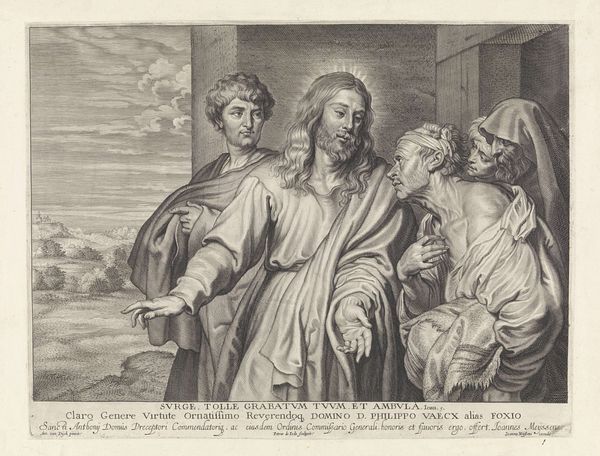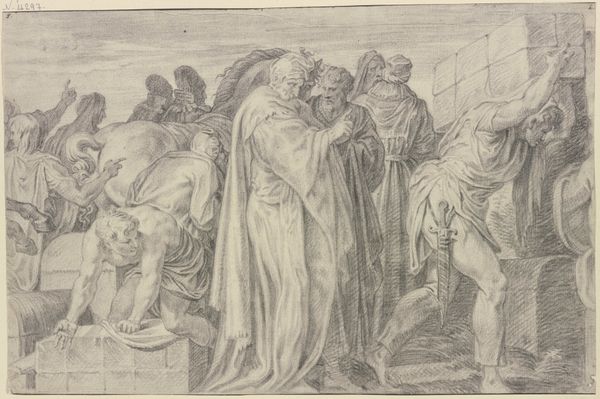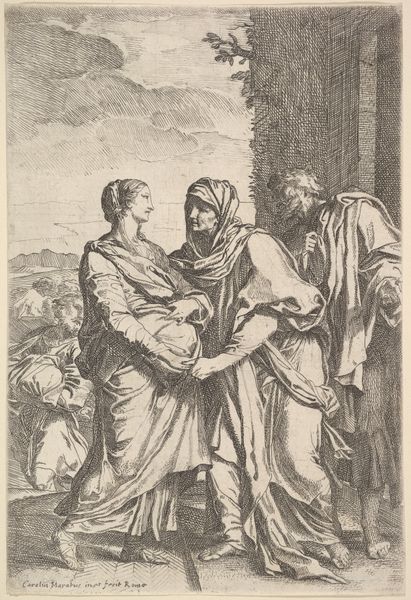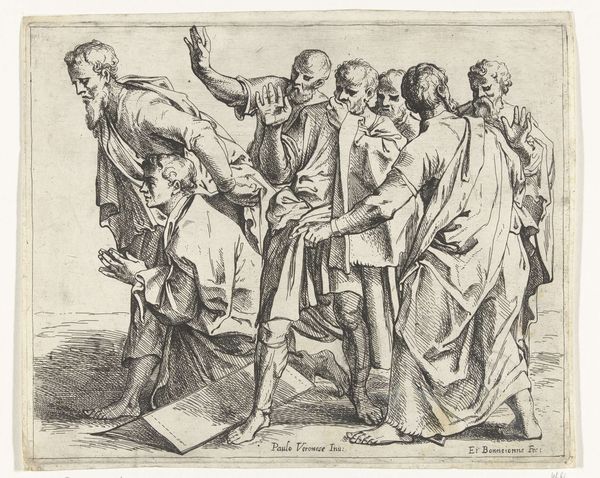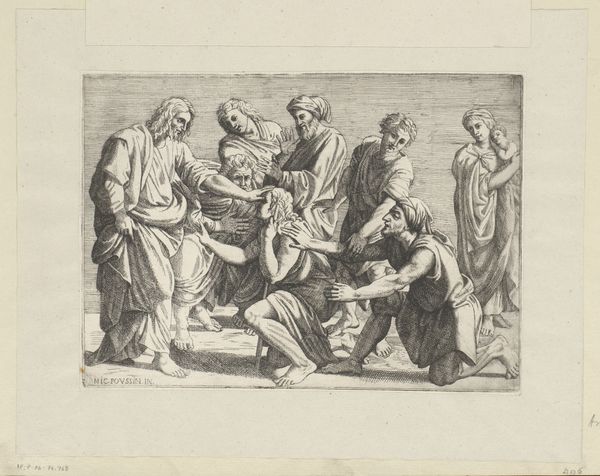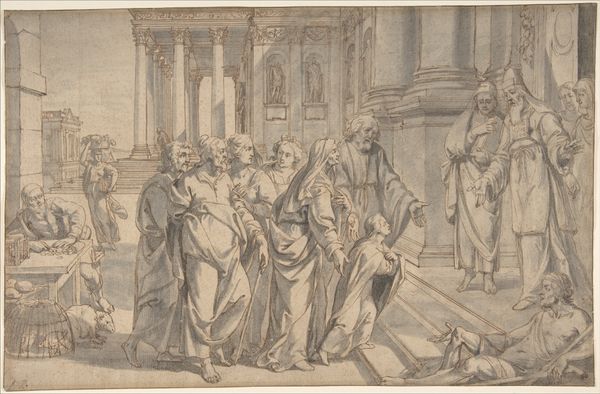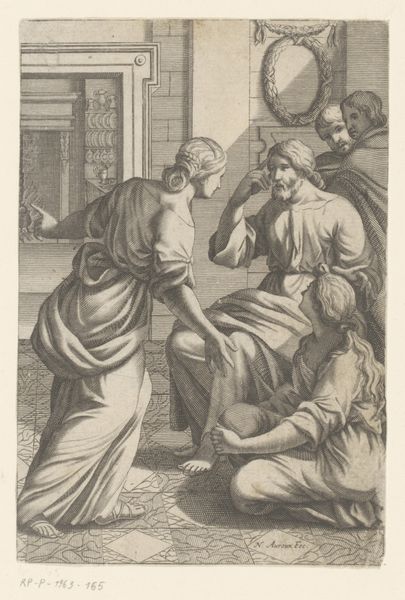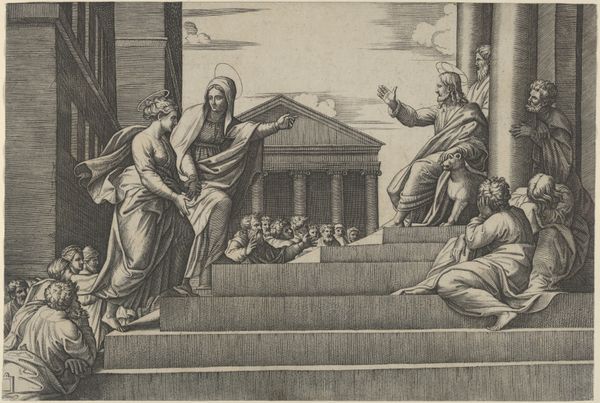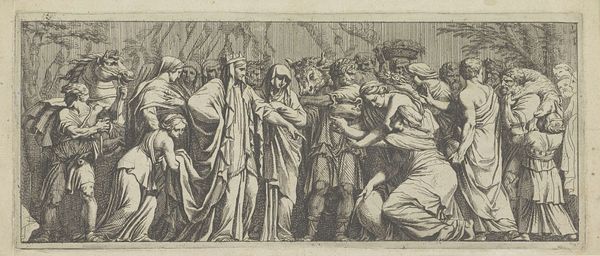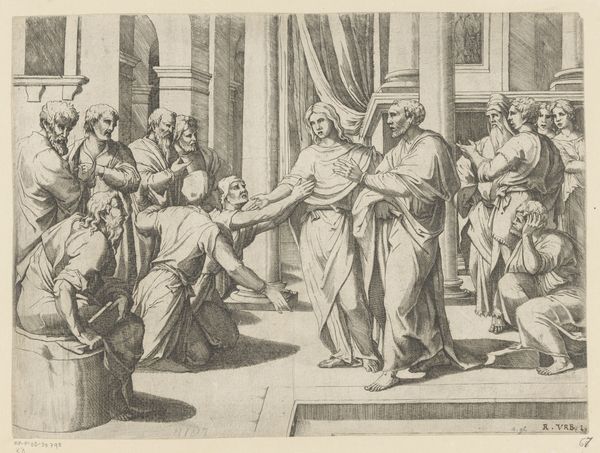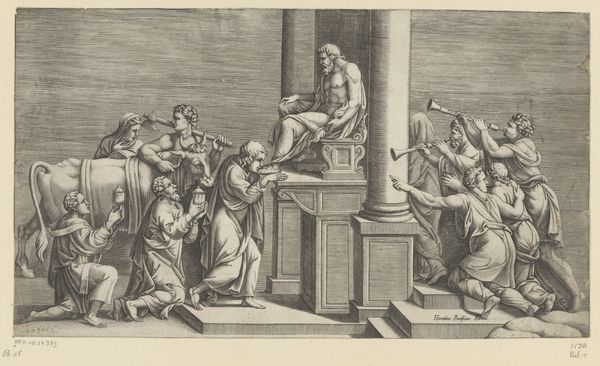
The Triubute Money: Christ at center right gesturing to man at his left with coins in his hand, other figures surrounding them; columns and drapery in the background 1500 - 1589
0:00
0:00
drawing, print, engraving
#
portrait
#
drawing
# print
#
figuration
#
history-painting
#
italian-renaissance
#
engraving
#
realism
#
christ
Dimensions: Sheet (Trimmed to plate): 13 3/16 × 16 3/4 in. (33.5 × 42.6 cm)
Copyright: Public Domain
Domenico Campagnola created 'The Tribute Money' using ink on paper. This isn't just any drawing; it's an engraving, a printmaking technique that requires painstaking labor. The image starts with a metal plate, usually copper. The artist uses a tool called a burin to carve lines into the metal. Ink is then forced into these lines, and the surface is wiped clean. When paper is pressed against the plate, the ink transfers, creating the image. Look closely, and you can see the network of fine lines that define the forms. Engraving was a key technology for disseminating images widely in the Renaissance. It allowed for the mass production of artworks, making them more accessible to a broader audience. It also reflected a changing economy increasingly based on trade and the circulation of goods, ideas, and of course, money. The very subject of this engraving—the payment of tribute—is a reminder of this economic reality. Consider the labor involved in both minting the coin and creating this image, and you have a picture of value circulating in early modern Europe.
Comments
No comments
Be the first to comment and join the conversation on the ultimate creative platform.
